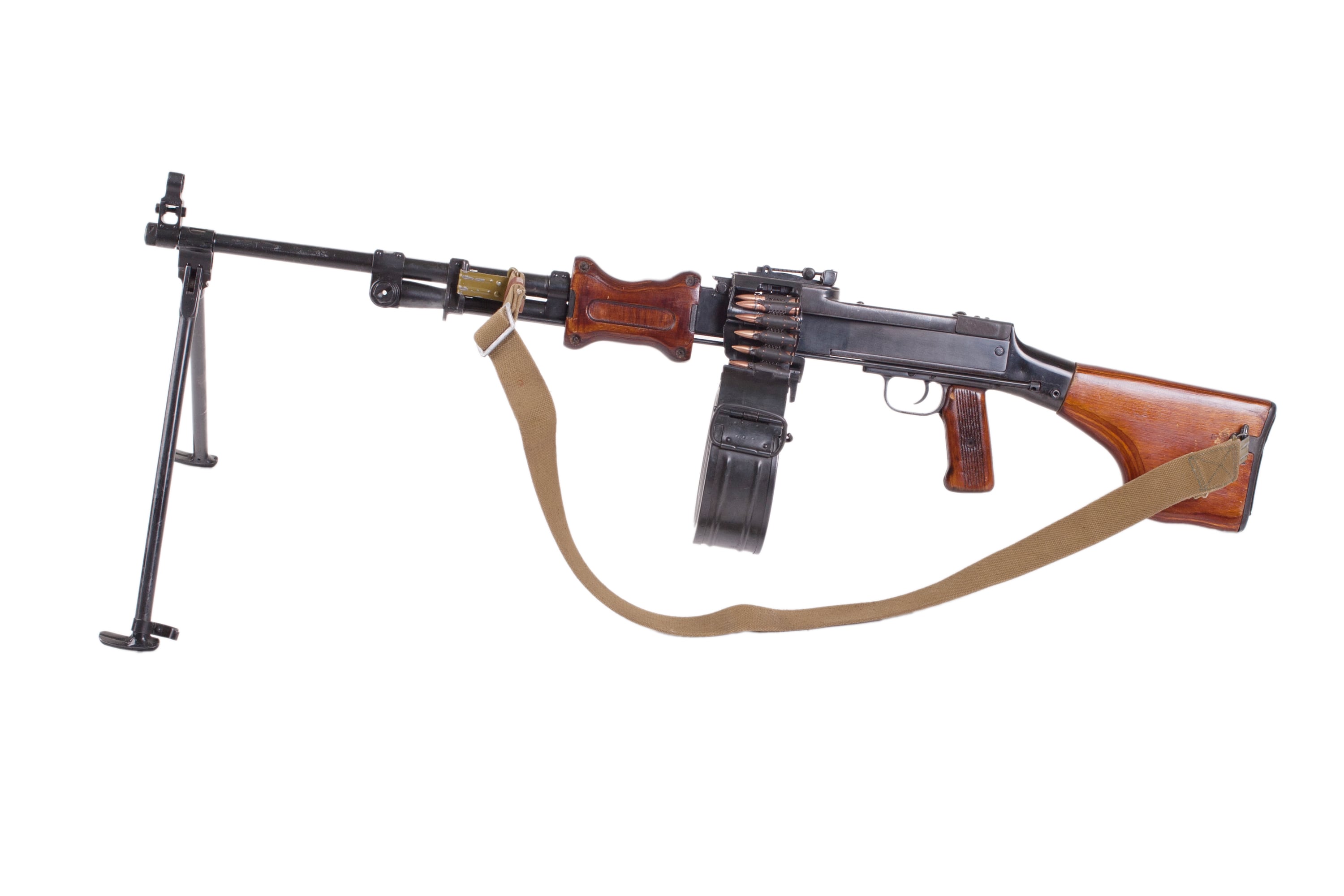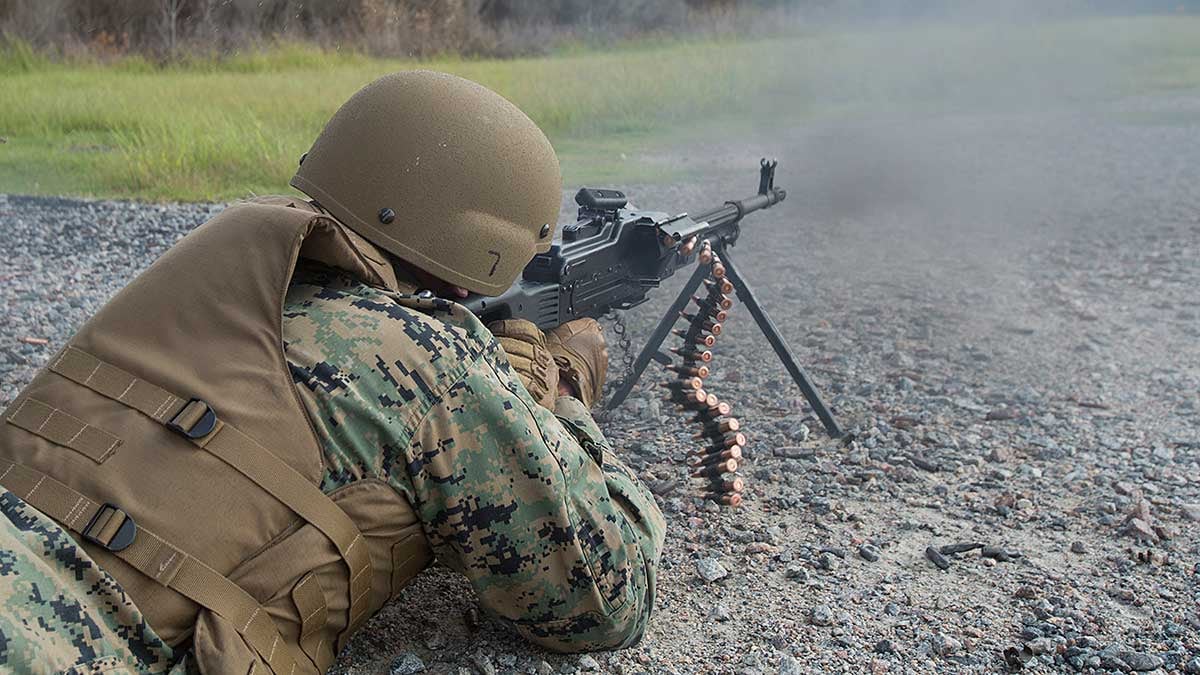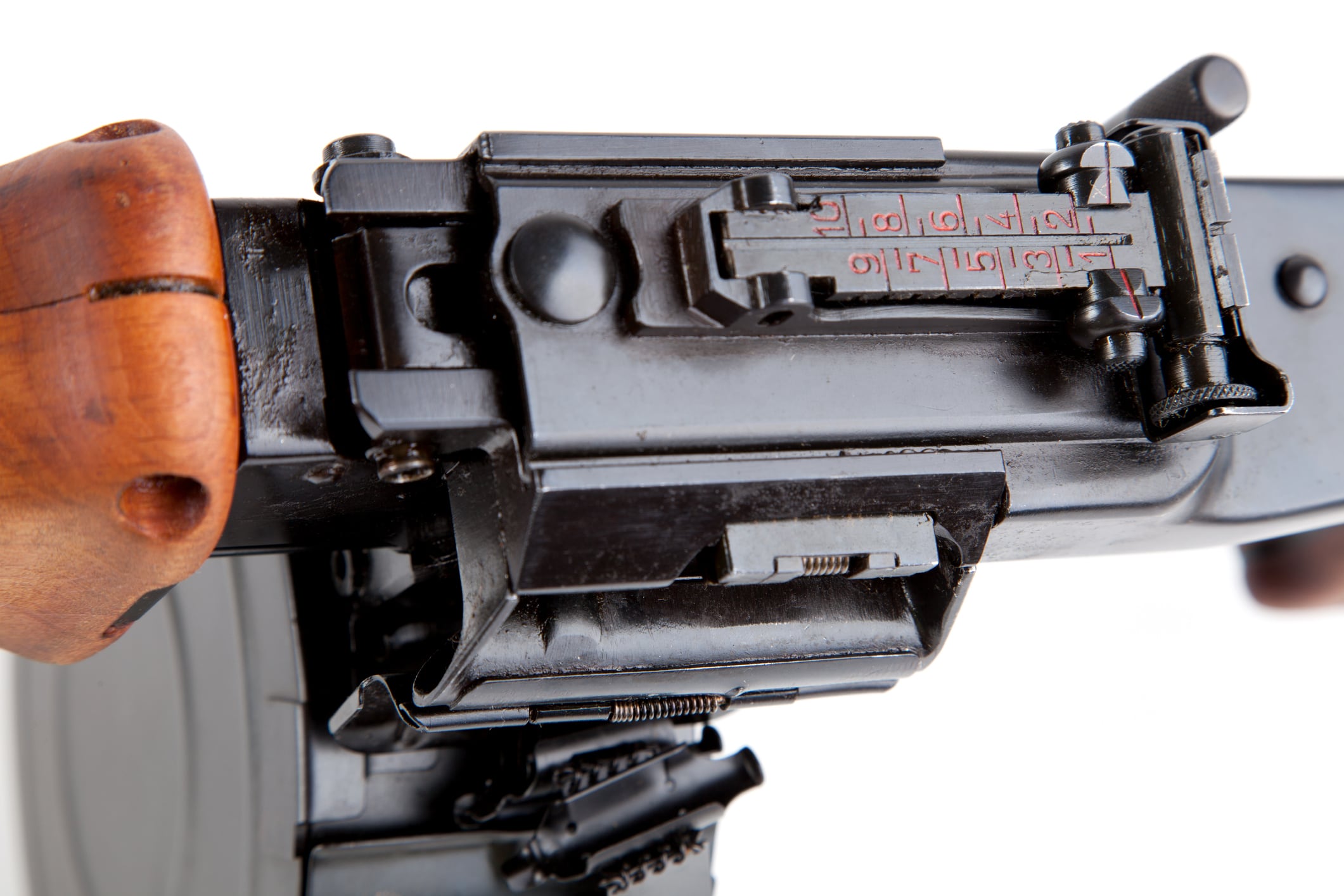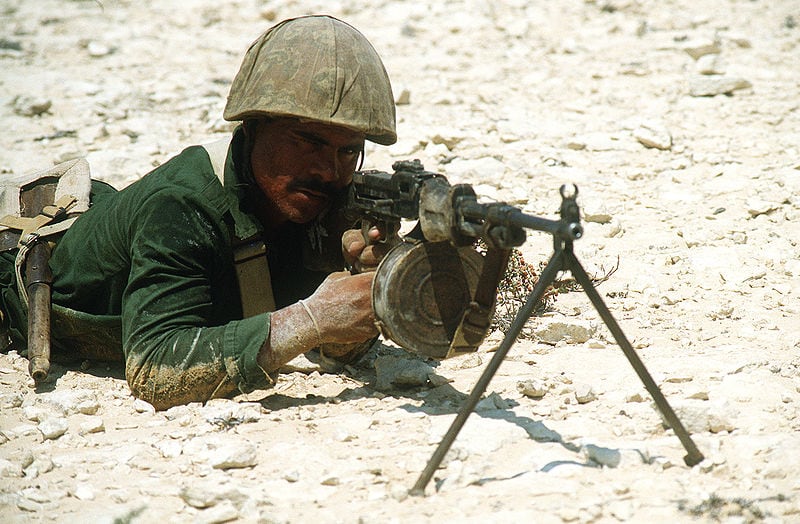The Vietnam War saw a dazzling variety of weaponry used by both sides, of which only a handful emerged as ubiquitous classics.
For American and South Vietnamese soldiers, the principal firearm became the M16 assault rifle, with extra firepower lent by the M60 squad machine gun. For the North Vietnamese and Main Force Viet Cong, the principal weapons were either the Sergei G. Simonov-designed SKS-45 carbine or Mikhail T. Kalashnikov’s famous AK-47 assault rifle, while backup support was usually provided by the Degtyaryov RPD.
The RPD’s pedigree goes back to 1921, when Vasily A. Degtyaryov began work on an easily-manufactured gas-operated light machine gun, which was adopted by the Red Army in 1928.
The DP was designed to use the same 7.62x54R round used in the Mosin-Nagant rifle of 1891, the cartridge casing of which had an unusually large rim that made it unsuitable for use in a box magazine. In consequence, the DP used a flat 49-round drum that fed rounds from the top.

In 1943 Degtyaryov and his design team began work on a gun to use the 7.62x39 short-case cartridge, which made possible more compact weapons requiring lighter ammunition loads. Development was slowed by the exigencies of war, in which the DP was still urgently needed and as an interim measure Degtyaryov introduced the DPM, with a repositioned mainspring and a wooden pistol grip.
Entering production in 1945, the DPM was too late to see much wartime use but became standard for the Soviet Union and its allies—including the Chinese People’s Liberation Army and the Viet Minh—well into the 1960s. After the war, however, the accelerated development and production of the 7.62x39 round led to its adoption for Degtyaryov’s “hand-held machine gun” or RPD (Ruchnoy Pulemyot Degtyaryova), which quickly replaced the DPM.
It was also manufactured in China as the Type 56 and Type 56-1, and in North Korea as the Type 62 light machine gun.
The RPD was a belt-fed, gas-operated weapon with a locking system similar in principle to that of its World War II predecessor. It used locking lugs of the same sort, but unlike the DP’s they were pushed out to lock not by the firing pin, but by a wedge on the top of the slide.
The 50-round continuous ammunition belts could be joined together by putting the end link of one belt against the joining link of the other and inserting a cartridge to lock them together. The gun’s drum could carry two such joined belts, for a total of 100 rounds.
The fore sight was a post, while the rear sight was a tangent U. The rear leaf sight registered from 100 to 900 meters in 100-meter steps. The RPD was 40.8 inches long, compared to 43¾ inches for the M60 and the RPD weighed 15.6 pounds compared to the hefty 23 pounds that earned the M60 its sobriquet of “pig.”

The Soviet Union produced five progressively improved versions of the RPD. The first had a female gas piston fitting over a male gas spigot, no dust cover, a rigid, reciprocating cocking handle and a windage knob on the right of the rear sight.
The second production version had a male gas piston fitting into a female cylinder, and the windage knob was relocated to the left of the rear sight. A third version, which added a dust cover to the feed mechanism and a folding, non-reciprocating cocking handle, became the model for the Chinese Type 56.
A fourth, sometimes called the RPDM, ad a longer gas cylinder, an extra friction roller on the piston side and a buffer in the butt. A fifth model, which had a folding feed cover belt carrier and carried a multipiece cleaning rod in a butt trap, was copied by the Chinese in their Type 56-1.
The first reports of RPDs by American and South Vietnamese forces coincided with their first encounters with North Vietnamese Army regulars in April 1964. As more came down the Ho Chi Minh Trail, the RPD swiftly eclipsed the DPM as the principal Viet Cong squad machine gun.

The RPD could only be fired fully automatic and had an effective range of 800 meters with a muzzle velocity of 700 meters per second.
Although primarily used in fixed positions as a support weapon, its relatively light weight allowed it to be held like a large automatic rifle if necessary, including in the anti-aircraft role. There was also some advantage to using the same round as the AK-47, simplifying logistics for the communist forces in comparison to the Americans and South Vietnamese firing 5.56mm rounds from their M16s and 7.62mm bullets from their M60s.
Its principal disadvantage lay in its inability for the barrel to be changed, as could be done with the M60. Consequently, although it could fire 700 rounds per minute, the RPD’s barrel would burn up if it was fired in more than 150-round bursts for more than two or three minutes. This was just as well as far as the VC were concerned, given the necessity to conserve ammunition as well as the weapons themselves.
“The RPD was the most fearful weapon I encountered out there,” said William S. Bacon, who commanded Company A, 2nd Battalion, 196th Light Infantry Bridge, 23rd Infantry Division (Americal) in 1970. “It was much faster and had a whole different sound from the AK-47’s, kind of a dull thud….The RPD was an excellent crew-served weapon for ambushes, but the M-60 was a lot more mobile, easier to use, and could set down a real sustained fire—I preferred the pig.”
In 1964 Kalashnikov introduced the RPK, essentially an AK-47 with a heavier barrel, a bipod and the ability to use a 75-shot drum. In spite of its obsolescence, however, the RPD remained a good light machine gun and continued in NVA and VC service until the end of the war in April 1975.
Moreover, given the vast numbers produced and exported by that time, RPDs can still be found in the arsenals of China, Egypt, North Korea, Pakistan, the Socialist Republic of Vietnam and many other Third World nations.





